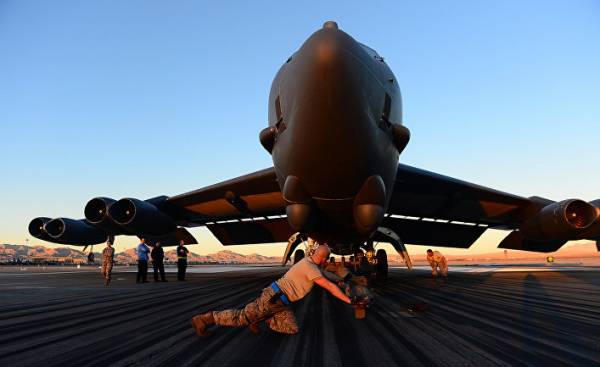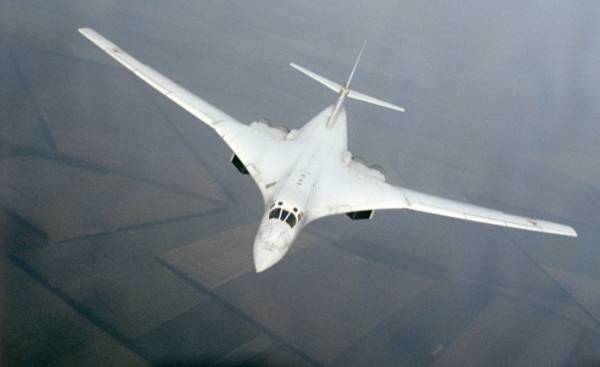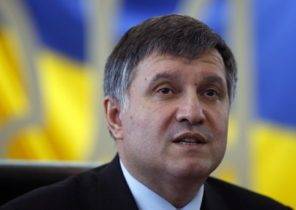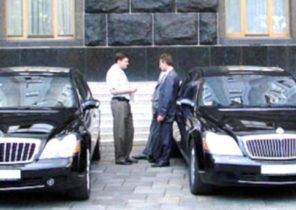
During the cold war, the United States and the Soviet Union for several decades, terrified for each other annihilation of the enemy with nuclear weapons. The efforts of millions of people and countless funds spent on the development and deployment of weapons systems, equipped with the most modern technology to ensure the complete destruction of the enemy state in case the cold war goes into the hot phase.
In the course of this arms race, both sides have created bombers capable of crossing oceans and continents to drop nuclear bombs directly into enemy territory. Subsequently, when this became impossible due to the improvement of air defense systems, these aircraft began to deploy missiles to launch as close to the goal. It seems incredible that some of these engineering wonders of the 1950s — 1970s years continue to fly today, 26 years after the collapse of the Soviet Union and the end of the cold war, for participation in which they were developed.
At the helm of some of the planes sitting their grandchildren of the first pilots, and these devices do not lose their effectiveness. They upgrade, not to retire, for example, U.S. B-52 or the Russian Tu-95 (Bear — “Bear” by NATO classification), or resume their manufacture of newer models, in particular, the Russian Tu-160. Giants of the cold war will remain with us for many years, some of them will last over a hundred years and an eternity for the aircraft.
Boeing B-52 Stratofortress
The contract for the development of the strategic bomber B-52 was signed in 1946, the first flight of the machine took place on April 15, 1952, in 1955, he was delivered to the U.S. air force. After 62 years, this upgraded and modified aircraft continues to fly and engage in combat. B-52 Stratofortress (flying fortress) was designed as an Intercontinental jet bomber-the media unguided nuclear bombs to attack cities and strategically important infrastructure facilities of the USSR.
 © RIA Novosti, Skrynnikov | go to fotoracconti supersonic strategic bomber Tu-160
© RIA Novosti, Skrynnikov | go to fotoracconti supersonic strategic bomber Tu-160
Nuclear bombs were never dropped from these aircraft that were used in tactical purposes in all armed conflicts involving the United States since 1965 — the Vietnam war. But they dumped thousands of tons of unguided and guided bombs with the usual charge, and now they continue to sail the sky, sometimes manned grandchildren of its first commanders. Between the pilots called the bomber Buff (Buff). Is an acronym formed from the words Big Ugly Fat Fucker (big, ugly, fat type).
The length of the plane is 48.5 meters, wingspan — 56,4 meters, wing area — 370 square meters. The height of the vertical stabilizer — 12.4 meters, the empty weight of the aircraft 83,25 tons, maximum takeoff weight of 220 tons, which allows him to carry 31.5 thousand pounds of weapons and 181 thousand liters of fuel.
Bomber is a swept-back wings (the sweep angle of 35 degrees), with them hanging four paired compartment with turbojet engines TF-33 production Pratt & Whitney. The device can reach a maximum speed of 1046 km/h (650 mph or 0.86 Mach). Maximum flight range without refueling in air is 14 thousand miles (ferry range of more than 16 thousand kilometers), but in-flight refueling maximum range depends on the endurance of the crew. The aircraft can fly at an altitude thousands to 15.24 meters. The crew consists of five men (commander, copilot, Navigator, radio operator-gunner and the engineer-electronics engineer), although sometimes it housed and artillery to fire from anti-aircraft guns captured from the camera in his latest modifications.
B-52, designed for moving the large mass bomb load with a large internal cargo Bay and four underwing suspension systems of weapons, so that the machine can carry various types of unguided and guided bombs (nuclear, conventional and cluster) as well as missiles, air-to-surface, designed to impact both ground and surface targets, mines, electronic warfare systems up to a total weight of 31.5 tons. It was built 744 unit in the eight modifications (A to H), the last aircraft left the factory floor on October 26, 1962.
As the development of new models of bomber improved his design and install on-Board electronic equipment has changed the structure of the tail section, including the location of the tail machine guns (which were subsequently removed from the apparatus). Also, the planes were equipped with new sights, systems, electronic warfare, modified models of the engines more power with less fuel consumption. Currently, the U.S. air force are armed with about 70 b-52 bombers on full alert, and 20 more are in reserve. All devices belong to the H, passed modernization with extension of service life.
The first missions of these aircraft, developed initially for participation in a nuclear war, were the so-called carpet bombing using unguided bombs with the usual charge (during the Vietnam war) like those that were used during the Second world war. During the American military campaign in the Persian Gulf a b-52 bombing from a great height and struck at targets from a low height, including missile strikes.
Today, the American strategic bombers are used in Syria, Afghanistan and Iraq as support aircraft at high altitude with the use of guided munitions. Because of its combat radius, high survivability, these machines are perfect “flying arsenals” for dropping guided bombs (laser guided or GPS) by ground command. Equipping aircraft with Litening module c in 2007 allowed to apply them to perform the above tasks. In addition, the B-52 can be used to patrol marine areas and to take on Board mine or missile Harpoon. The speed and range of the bomber allows him to fly around the extensive grounds in the course of search operations.
For many years of service with B-52, at least 11 vehicles have been lost as a result of aircraft accidents, including the B-52G, which on 17 January 1966, faced with the plane-a KC-135 Stratotanker in the skies above the Spanish village of Palomares (Almeria province). Fell to the ground four thermonuclear bombs aboard the bomber, causing radiation contamination of the terrain. Another 30 aircraft were lost during the Vietnam war, of whom at least ten were shot down by the enemy, and five had received such serious damage that was barely able to reach the airfields of the allies. In turn, the arrows of the two aircraft B-52D knocked out the tail guns, two MiG-21. Currently, the B-52 continue to perform combat missions in Syria and Iraq, striking at the positions of the terrorist groups, including Islamic state (organization banned in Russia — approx. TRANS.), and fly for “show of force” in areas of high international tension: the Baltic States, Eastern Europe or South China sea.
My latest plane, the B-52 is in operation for 55 years and has tens of thousands of flying hours, but the design of these devices in the style of 50-ies and numerous upgrades and modifications allow to operate them for many years. It is the objective of the new proposal to replace the engines of American bombers is their weakest link. The U.S. air force has requested about ten million dollars to conduct studies on options to replace the latest version of the engines TF-33 Pratt & Whitney on the most modern power plant, which should reduce the operating costs of the aircraft (the cost per flight hour, fuel consumption) and increase the range.
The cost of improvements to Park B-52 bombers, including the restructuring of the cargo compartment to allow loading it guided munitions, is 227 million dollars. In the period from 2018 to 2020 is expected to spend $ 1.34 billion on upgrading radar installations and equipment of units of the new systems. The US air force intends to continue operating the “Buffs” until 2040, when it will be 100 years old. And he will continue to bomb.
Tu-160 “White Swan”
The Soviet equivalent of the American B-52, in fact, was a turboprop strategic bomber Tu-95 with swept wings, designed to perform the same combat tasks in the same era, which also continues to operate at present. But a more interesting example in terms of modernization, is without a doubt a follower of this aircraft, the Tu — 160 “White Swan” (Blackjack Is “Blackjack” by NATO classification). This unit belongs to the next generation bombers, and he is truly worthy of respect.
The Tu-160, which began competition in 1972, was to become a competitor to the us models XB-70 Valkyrie or the B-1A, which was never put into service. In the framework of this task, Tupolev created a monster: the largest and heaviest in the world combat aircraft with variable geometry wing, capable of speeds twice exceeding the speed of sound, and the world’s fastest bomber, standing armed at the present time. The cost was so expensive that today there are only 16 such devices which can be operated. But they have such a potential that the Russian defense Ministry plans to resume production of this aircraft.
In appearance of the Tu-160 is reminiscent of an American aircraft Rockwell B-1 Lancer in a larger view. The Russian bomber is larger than its American counterpart (the length is 54.1 meters, compared with 44.5 metres; maximum wingspan is 55,7 meters as compared to 41.8 meters), it is heavier (maximum takeoff weight — 275 tons, compared with 216 tons), faster (maximum speed of Mach 2 compared to Mach 1.25), can carry in the cargo Bay, more weapons (40 tons compared to 34 tons). It is designed as a missile carrier, cargo compartments are equipped with two drum launchers, each of which can carry six cruise missiles X-55 (with conventional and nuclear warheads and a range of up to 2.5 thousand kilometers) or 12 aeroballistic hypersonic X-15 missiles (nuclear or anti-ship) short range (300 kilometers).
The maximum flight range of Tu-160 without refueling — 12.3 thousand kilometers, combat radius — about 7 thousand miles, it is equipped with a fuel consumer boom air refueling, which is used in rare cases. Maximum altitude of 15 thousand meters. Although the aircraft were built without the use of technology Stealth, a number of design features to reduce its radar signature, for example, compared to B-52.
In April 1987, the 184-th guards Poltava-Berlin red banner heavy bomber aviation regiment at Priluki (in the territory of the Ukrainian SSR) was equipped with Tu-160 bombers, but after the release of 36 units caused the collapse of the Soviet Union, which affected the fate of the Tu-160.
After 1991, the Soviet Union ceased to exist, Ukraine nationalized all Armed forces within its territory. At the airfield in Priluki was 19 “White swans”, which was appropriated by Ukraine, although most pilots and aircraft chose to go to Russia.
In the 90-ies these planes gradually fail because of the lack of the necessary repair services. Russia and Ukraine have been negotiating on the possible sale of these aircraft. Ukraine, they were not needed, but the requested price (about $ 3 billion) was too high for Moscow. After much wrangling and disposing of a device according to the Treaty on Ukraine’s nuclear disarmament, the parties came to agreement: subject to the debt relief, the procurement of gas, Russia had to pay Ukraine $ 285 million over eight Tu-160, which is in the best condition, three Tu-95MS aircraft and 575 missiles X-55. After the necessary training, in the period from November 1999 to February 2001, the Tu-160 was transferred to the Russian air base near the city of Engels, Saratov region.
In the composition of the 121-th guards Sevastopol heavy bomber aviation regiment, based at the airfield near Engels, was already six units of the Tu-160, they added eight more bombers transferred from Ukraine, and several aircraft that completed the Russian Ministry of defense after the collapse of the Soviet Union. After a series of crashes and commissioning of new submarines now in service with the Russian air force is 16 Tu-160 (modification of the Tu-160M), although it is believed that only 11 of them are in a state of full combat readiness. These devices are carried out demonstration flights in South America (in 2008 Venezuela and in 2013 in Colombia). In November 2015, the Tu-160 bombers took part in the fighting, striking with cruise missiles on targets in Syria.
Given the power and potential of these devices, it is not surprising that the Russian defense Ministry wanted to increase the fleet of Tu-160. The idea to resume production of these aircraft (one unit is in two or three years) and to increase their number to 30 by 2030-2040 years. The missile will be produced in the modification of the Tu-160M2 and, according to official figures, will be equipped with new accessories 60%, including new power plant, which should increase the range of the Tu-160 approximately a thousand kilometers and altitude up to 18 thousand meters.
In the on-Board system of the aircraft is planned to build in the latest high-precision devices that allow shooters to use a “smart” munitions and radar systems and communications equipment of the last generation. Another important change will be the replacement of all equipment of the Ukrainian production, as now, when the relations between Russia and Ukraine escalated, its import is impossible. Resuming production of the Tu-160 will slow the implementation of the program of development of promising aviation complex distant aviation (PAK DA), but will extend the service life of the apparatus, which in this case can remain in service for more than 50 years. And then nobody will be able to say that the “old” good for nothing.







